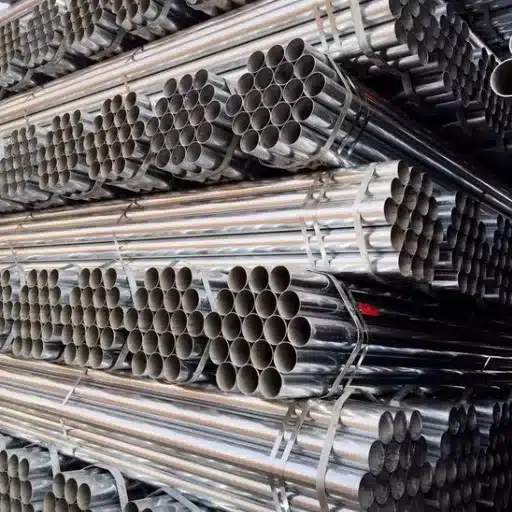Sanitary fittings, for instance, stainless steel pipe fittings, serve to safeguard the liquid’s uncontaminated circulation in hygienic applications. This also renders great significance in food processing, pharmaceuticals, and biotechnology industries. Hygiene maintenance features in these fields are not only important but rather crucial, so to speak.In this blog, I will focus on the numerous advantages of stainless steel and its unique properties that ensure reliability, durability, precision, and extreme cleanliness. You will learn information, such as the various industries that employ these fittings, as well as their selection and maintenance procedures. If you have relevance to a strict professional environment or merely want to know the technology behind sanitary systems, this blog will tell you all the essential things you need to know. Let us first clear why stainless steel sanitary fittings are flexible in a number of critical applications and examine the ‘what’ and ‘how’ in the aspects of design and manufacture.
What are sanitary fittings, and where are they used?
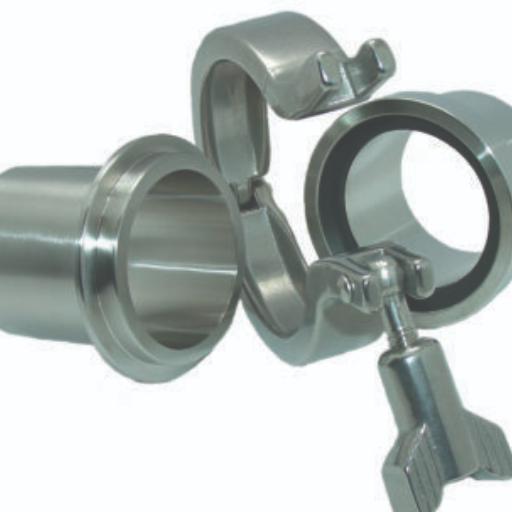
Sanitary fittings are also known as hygiene fittings and are used to ensure cleanliness during fluid processes. Sanitary fittings are widely used in the industrial processing of food, beverages, and vital pharmaceuticals, which require the maintenance of strict hygiene throughout the production process. Stainless steel is the preferred choice for making sanitary fittings due undertone properties as well as being durable, anti-corrosive, easy to clean, and can be sanitized. Their purpose is to connect pipes and equipment in a fashion that allows easy dismantling and cleaning, and sterilization.
Definition of sanitary tube fittings and their hygienic properties
Sanitary tube fittings are engineered with hygiene in mind in order to prevent contamination with sensitive processes. In general, these fittings have smooth, crevice-free surfaces that help to minimize bacterial growth. Precision manufacturing eliminates irregularities or rough edges where residue could accumulate, all supporting clean-in-place (CIP) and sterilize-in-place (SIP) practices.
New developments include the use of 316L stainless steel due to its increased resistance to corrosion as well as to high-temperature cleaning processes. For example, research shows that 316L stainless steel is impervious to washing pressures of 1,500 psi and temperatures greater than 300°F, making it ideal for harsh cleaning environments.
Furthermore, sanitary fittings are compliant with various other international standards such as ASME BPE (Bioprocessing Equipment) and FDA standards, making them suitable for other sectors that require sterility and cleanliness. The standards define the requirements for the surface finish of the material, the grade of the material used, and the overall level of belonging to precision high-grade fittings, thus ensuring optimal rigid sanitary fittings.
Industries using sanitary fittings: pharmaceutical, beverage, and personal care
Sanitary fittings are sanitary equipment essential for the pharmaceutical industries, specifically in drug manufacturing, vaccine production, and other biotechnological endeavors, due to the high requirement for sterility and lack of contamination. As an example, studies show that surface finishes with a roughness average (Ra) lower than 0.4 μm are preferred because they support lower rates of microbial growth. Stainless steel is now popular encompassing grade 316L, which has high resilience to corrosion, is non-reactive with cleaning materials and high temperatures, and therefore surgical standards later complying to be referred to as good manufacturing practices (GMP) are observed.
Beverage Industry
Hygienic fittings are crucial in maintaining product quality as well as compliance within the beverage industry, from brewers to soft drink manufacturers. The utilization of soft drink tubing, valves, and seals assures that liquids are not contaminated during production, storage, or transport. Industry reports showcase that beverage processing is more sustainable with the use of automation and sanitary fitting CIP (Cleaning in Place) systems, as they reduce water and energy consumption. For example, precision-engineered fittings capable of withstanding pressures and temperatures during carbonation or pasteurization while maintaining hygiene encourage fitting hygienic design principles. Personal Care
Personal Care Industry
Creams, lotions, and other personal care products are significant aids in aiding sanitary fittings while simultaneously maintaining a clean, stable environment that ensures safe product consistency. Fittings of the said industry are known to withstand formulated abrasive or reactive ingredients while maintaining FDA and ISO 22716 standards, which are good manufacturing practices for cosmetics. Sanitary components of high performance ensure that these standards are compliant, along with other fundamental industry norms. Of utmost importance while maintaining product consistency, zero cross-contamination must occur throughout batches; this is achieved through the use of single-use systems along with sanitary seals.
Sanitary fittings in these industries not only streamline production processes effectively but also maintain high levels of hygiene and safety, which is critical for consumer trust.
How sanitary fittings are designed for cleanliness and clean-in-place (CIP) processes
Sanitary fittings are custom-made to meet cleanliness and clean-in-place (CIP) needs in food and beverage, pharmaceuticals, and cosmetics industries. These fittings have smooth, crevice-free internal surfaces that are less susceptible to residue build-up and microbial contamination. Primary materials for these fittings are stainless steel, mainly due to its grades 304 and 316L’s corrosion resistance and ease of cleaning.
Standardized measurements and certain surface treatments, including those from ASME BPE (Bioprocessing Equipment) standards, are mandatory for CIP processes on sanitary fittings. Frequently used surfaces are electro-polished with Ra 15-30 µin, thus providing effective cleaning and an ultra-smooth finish. Also common are hygienic seals EPDM or PTFE, which can endure numerous high temperatures, chemical cleaning cycles without losing seal integrity.
CIP-compatible sanitary fittings, optimally designed, can lead to improvement in efficiency and reduce costs; a recent study found that the proper implementation of these fittings cut operations cleaning time in half. This results in less water and chemicals being used, as well as improved operational effectiveness, bolstering sustainability, a focus of many industries nowadays. Some modern fittings even go the extra mile by featuring self-draining elements, fully embracing the “clean by design” ideology.
What types of sanitary fittings are available in process piping?
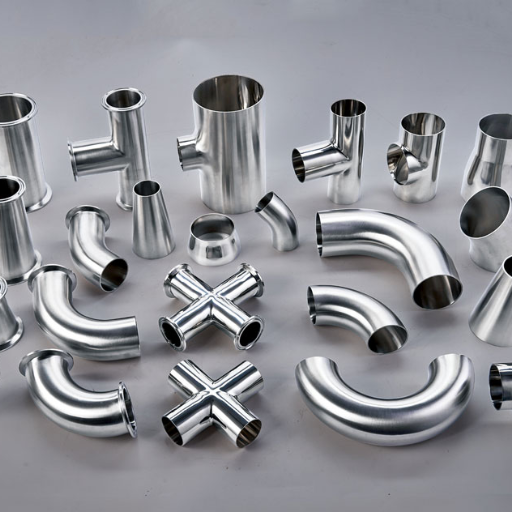
A range of different sanitary fittings are used in process piping, which include but are not limited to:
- Tri-Clamp Fittings: Used extensively due to their ease of assembly, cleaning, and secure sealing.
- Compression Fittings: Provide a reliable and leak-proof joint without the need for welding.
- Welded Fittings: Used in high-pressure systems, they offer a permanently sealed connection.
- Elbows and Tees: Used to change the direction or split the flow of a fluid.
- Reducers: Allow the joining of pipes with different diameters.
- Caps and Plugs: Used to seal off the ends of piping whenever required.
Fittings meet sanitation and hygiene standards to ensure cleanliness and process integrity.
Tri-clamp fittings and clamp connections in sanitary piping systems
Tri-clamp fittings and clamp connections serve an important purpose in sanitary piping systems because they are efficient and simple to maintain. In addition, the food and beverage industry, along with pharmaceutical and biotech industries, rely on these fittings for swift assembly, along with reliable disassembly, owing to the frequent cleaning and inspections needed in these sectors. Regularly made of stainless steel, tri-clamp fittings not only resist corrosion but also make hygienic conditions easier to maintain.
The fittings work by connecting two pipe ends or components with a clamp and a gasket, whose tight coupling creates a secure seal that blocks leaking fluids or contaminants from entering. Since the tri-clamp fittings adhere to industry ASME-BPE and 3-A standards, they ensure system and equipment compatibility across different manufacturers’ systems and equipment.
Their robust performance makes tri-clamp fittings a reliable component for systems demanding strict sanitary standards alongside hygienic features. Data reveals these fittings span -20°F to 400°F (-29°C to 204°C) along with 250 PSI for pressure tolerance, depending on size and gasket material used.
Bevel seat fittings and their applications in hygienic processes
Another example is bevel seat fittings, which are frequently used in hygienic processes. These fittings are made for easy manipulation and dependable closure while securing the clean and smooth joining surfaces. Sanitary considerations are extremely important in the dairy and food processing industries, the average industry, and the pharmaceutical industry, and these fittings are used in all of those areas. Provided below are some details and data on bevel seat fittings:
- Material: Usually composed of 304 or 316 stainless steel to preserve the strength and resist corrosion in hostile conditions.
- Seal Type: Uses a metal-to-metal seal which, in most circumstances, practically renders gaskets useless, thereby reducing the contaminants’ trapping features.
- Temperature Tolerance: Has a reasonably broad temperature range, usually from -100°F to 500°F (-73°C to 260°C), depending on the application and specific material.
- Pressure Rating: Bevel seat fittings typically have a maximum pressure rating of 150 PSI, although this is subject to design and size considerations.
- Sizes Available: Standard sizes are from 1 inch to 4 inches in diameter, which makes these fittings adaptable to different piping systems.
- Easy Cleaning: They may be completely dismantled and put back together with ease, which permits thorough cleaning as far as maintaining hygiene is concerned.
- Applications:
- Dairy Processing: Used primarily for pipeline connections for milk and cream transfer while maintaining cleanliness.
-
- Beverage Production: Critical for pipeline transportation of raw and finished products as well as for public health. sanitary.
- Pharmaceuticals: Used in systems with the strictest cleanliness and contamination control protocols.
- Food Processing: Optimal for the handling of ingredients such as sauces, oils, and syrups without contamination.
Popular in industries where adherence to sanitary and hygienic requirements is critical, bevel seat fittings are renowned for their reliable service in hygienic applications.
Weld fittings and threaded connections in sanitary applications
Weld fittings and threaded connections are important for the functioning of sanitary piping systems in the food processing, beverage production, pharmacy, and biotechnology industries. Weld fittings are especially pertinent for processes that require robust and leak-proof joints to prevent fluid spillage or bacterial infection. Their construction allows them to endure high pressure and temperature, which makes them ideal for vigorous cleaning such as Clean-in-Pace (CIP) and Steam-in-Pace (SIP) procedures.
On the contrary, threaded connections tend to be used in lower-pressure systems, where routine changes in the piping structure take place, as they allow for modifications without the need to saw the pipe into pieces. They also maintained various hygienic standards due to precision engineering that reduces the presence of gaps where contaminants and bacteria can thrive.
Stainless steel is the most popular choice of material for both weld fittings and threaded connections because of its sanitary requirements and durability. Recent studies have shown that stainless steel grades 304 and 316L are the most utilized metals due to their resistance to contamination and their efficiency in keeping sterile environments.
Weld fittings and threaded joints can be chosen based on the operating needs of the system. If cleanliness is of utmost importance, then weld fittings are best suited. Weld fittings are best for systems that don’t need to be reconfigured frequently. Threaded joints are easy to clean and manageable for systems that require frequent inspection.
How are surface finish and roughness average (Ra) important for sanitary tube fittings?
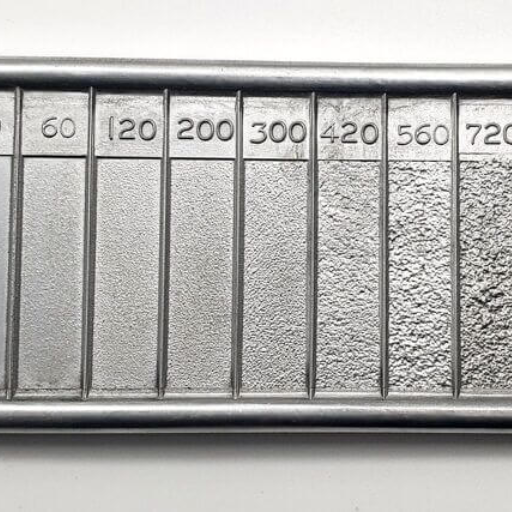
Both surface finish and roughness average (Ra) measurements need to be precise in relation to cleanliness and contamination control for tube sanitary fittings. A clean finish leads to less surface residue retention, which subsequently minimizes cleaning and sterilization procedures as well as bacterial proliferation. A reduction in Ra value means better surface texture, which increases hygienic performance, as well as sanitary requirements in the food and pharmaceutical sectors.
Understanding surface finish measurements and peaks and valleys in sanitary fittings
Surface finish is very critical and important to the functionality and hygiene of sanitary fittings. Typically, it is measured with Ra, or Roughness Average. Ra measures the average deviation of surface profile peaks and valleys from the mean line. This is expressed in micrometers or microinches. For sanitary applications, the common industry standard for Ra is 32 µin or lower. Finer finishes can achieve 15 µin, and even 10 µin for more demanding environments, like biotech or pharmaceutical operations.
To achieve these finishes, mechanical polishing, electropolishing, or a combination of both is utilized. Electropolishing enhances corrosion resistance while also further smoothing the surface by removing fine material from peaks and filling microscopic valleys. Studies show the process meets the hygienic requirements put in place by 3-A Sanitary Standards and the FDA, but also exceeds them.
Today’s profilometers and microscopic imaging guarantee accurate measurement of surface roughness. These instruments check that the surface texture meets the legal requirements, especially in places where bacterial infestations might pose severe threats. Knowing these precise measurements allows industries to provide reliability and safety in operations.
Ra requirements for different industries and 3-A sanitary standards
Across different industries, surface roughness, especially measured as Ra (arithmetic average roughness), is crucial to safety, hygiene, and functionality. Different sectors have unique Ra requirements based on their operational needs, regulatory requirements, and the threats posed by contamination or equipment wear.
- Food and Beverage Industry
Dairy and food-related industries have equipment hygiene standards that are governed by “The 3-A Sanitary Standards”. These standards require a Ra value of contact surfaces to be ≤32 microinches (0.8 µm). This value is indeed smooth enough to inhibit bacterial growth but still allows for cleaning and sterilization to take place. Other less tolerant environments, such as pharmaceutical or baby food production, might require even finer finishes within the range of 16 microinches (0.4 µm) or lower.
- Pharmaceutical Industry
The most critical surface finishing associated with sterility and no contaminant cross-exposure exists in the pharmaceutical industry. For bioreactors or inter-connecting pipes, the required surface finish is often specified within the range of 25 microinches (0.6 µm) for Ra values. To further add strength in the cleanliness and resistance to corrosive materials, surfaces are subjected to electromachining, which produces highly polished and passivated surfaces.
- Aerospace Industry
Aerospace needs to work on the performance, efficiency, and reliance on precision finish applications. Various critical parts, such as hydraulics or systems turbine blades, are said to follow a preset guideline of Ra value 16 to 63 microinches (0.4 to 1.6 µm) depending on the material as well as the functions performed. These surfaces also have an impact on safety and aerodynamic performance and require finishing.
- Medical Device Industry
Implants and other medical devices that are placed within the body require exceptionally smooth surfaces to avoid tissue damage, lower bacterial attachment, and enhance biocompatibility. Such surfaces possess Ra values ranging from ≤8 to 16 micro inches (0.2 to 0.4 µm) and often make use of sophisticated manufacturing technologies like laser polishing.
Following the specified Ra requirements and 3-A sanitary standards, where relevant, such manufacturers would remain compliant with world safety and sanitary standards. Achieving and monitoring specific values of surface roughness as it pertains to critical applications not only safeguards product trust but also product integrity.
How surface finish affects cleanliness and corrosion resistance
To control cleanliness and corrosion, surface finish is very important for the food processing, pharmaceutical, or healthcare industries. A lower Ra or roughness average value implies a smoother surface, which holds less potential for contaminants, bacteria, or particles to collect. In fact, research indicates that surfaces with Ra values lower than 0.8 µm are much easier to clean and prevent biofilm formation. A good example would be stainless steel surfaces that have been electropolished because they mechanically clean the surface to a final roughness of 0.2 to 0.4 µm, thus enhancing hygiene.
Furthermore, the surface finish has a direct relationship with the corrosion resistance of a material. With a rougher surface, moisture and corrosive agents can be trapped in the micro-crevices, which will eventually lead to localized corrosion. Improvised polishing and electropolishing not only provide a smoother finish to the surface, they also enhance the corrosion-resistant passive oxide layer, which is crucial for resisting oxidation. Studies indicate a direct correlation between lower Ra values and improved corrosion resistance, leading to increased life of equipment and decreased maintenance costs. It is clear that effective techniques for surface finishing are needed to control hygiene and ensure rugged durability over time.
What materials are used in manufacturing sanitary fittings and tubing?
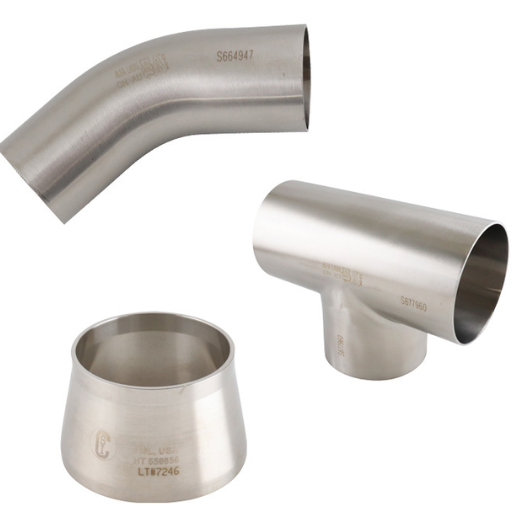
Grades 304 and 316, in particular, are well-known for their exceptional resistance to corrosion, strength, and hygienic properties. Because of these materials’ durability, non-reactivity, and ease of cleaning, they are preferred in the food, beverage, and pharmaceutical industries. Moreover, some applications may require the use of copper or some plastics like PVC or PTFE, depending on the project’s chemical compatibility or cost-efficiency requirements.
Why stainless steel is preferred for sanitary process equipment
Sanitary process equipment is usually made using stainless steel because of its properties suited to the demands of hygiene and cleanliness. One of its greatest benefits in not rusting is a must in places where equipment gets wet, cleansed, or is subjected to other hostile conditions. Stain steel’s passive chromium oxide film effectively shields iron from rust and grime, reducing the maintenance and cleaning needed.
Stainless steel also does not break under extreme hot and cold temperatures and large amounts of physical force, making it useful in intense industrial work. It contains a sleek non-porous exterior that not only prevents bacteria but is also easy to clean and disinfect, even when done many times. More recently, it has been shown that stainless steel types 304 and 316, as well as other now meet the FDA and EU food safety standards and are widely used in the medical and food industries.
What’s more, stainless steel is safe to use with many chemicals involved in food and drug manufacturing processes. There is no worry of leaching or contamination during production. Research has shown that the life cycle cost of stainless steel is often less due to its long life and low maintenance needs, despite its higher initial cost. These factors make stainless steel a preferred material for ensuring safety, quality, and operational efficiencies in hygienic processing.
How are gaskets used with sanitary fittings?
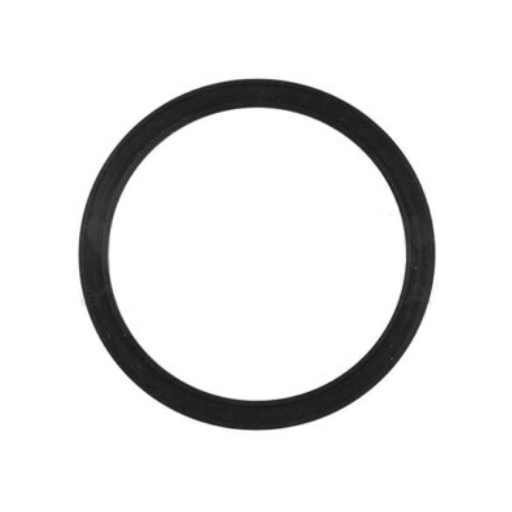
Along with sanitary fittings, gaskets are utilized to make a sealing surface that is tight enough to prevent any leakage. They are usually positioned between flanges or other end parts to obstruct the flow of liquid or gas and also to preserve sanitation during system operations. Gaskets are made out of silicone, EPDM, PTFE, and other substances that are enduring enough to bear the pressure and conditions in sanitary applications. They need to be checked frequently as well as well-maintained in order to preserve their integrity and functionality.
Types of gaskets used with different sanitary connection styles
The differences in styles of sanitary connections affect the choice of gaskets that will seal the connection. Different types of gaskets have been described below, along with various styles of sanitary connections.
1. Tri-Clamp Gaskets
Tri-clamp gaskets, or clamp gaskets, find their widespread application in the sanitary process industry. These gaskets are designed to fit tri-clamp ferrules with perfect sealing capability, providing an effective and efficient seal. Typical materials include silicone, EPDM, and PTFE, which stand up to extreme temperatures and erosion. For instance, PTFE tri-clamp gaskets are usable between the extremely low temperature of -450°F and 500°F. Hence, they are appropriate for high temperatures and aggressive chemical environments.
2. DIN Connection Gaskets
DIN (Deutsches Institut für Normung) gaskets are always manufactured as precision-sealed gaskets due to specific sealing requirements. Such gaskets are usually made of strong materials with rubber or FKM nitrile traits because they have to comply with high hygiene standards. They are used widely in the food and beverage, or pharmacy industries due to their endurance and sanitation capabilities.
3. I-Line Union Gaskets
I-Line designated gaskets require the use of strong materials like Buna-N or PTFE, which can withstand the unique groove structure of the I-Line connections. These gaskets are necessary for very demanding, high-pressure, and sanitary applications. I-Line gaskets are extensively used in dairy and brewing processes where processing conditions are severe in order to maintain the seal integrity during operation.
4. Bevel Seat Gaskets
Bevel seat joints are threaded, and the gaskets used here are usually composed of hygienic elastomers like FKM or silicone. The main benefit of bevel seat gaskets is that they endure vigorous shaking during processing while still remaining hygienic. Such gaskets are common in stainless steel piping systems in the cosmetic and biotechnological industries.
5. Camlock Gaskets
Camlock gaskets are gaskets specifically manufactured for camlock fittings used in quick-disconnect applications. Such gaskets must provide an adequate seal while permitting fast assembly and disassembly of the fitting. These gaskets are also made of EPDM or nitrile as the latter withstand and resist mechanical and chemical washing abrasion exceptionally well, thus allowing transfer of liquids, oils, chemicals, water, etc, in industrial and sanitary systems.
6. O-Ring Style Gaskets
O-ring gaskets have the widest application scope and are widely used with all types of sanitary connections, such as threaded, flange, and quick-release. Widely used materials for these gaskets are Viton, silicone, and neoprene, as they are flexible, chemical-resistant, and compatible with cleaning processes.
Selection Criteria for Gaskets
Every kind of sanitary connection gasket relies on specific features like operating temperature, pressure, chemical compatibility, and hygiene requirements for selection. Typically, manufacturers would settle on FDA compliance, USP class VI, or 3-A sanitary standards as certification guidelines.
Having knowledge of distinct gaskets’ properties allows businesses to obtain sanitary processing systems alongside minimizing maintenance costs, and achieving high operational efficiency.
Gasket materials and their compatibility with process fluids
Choosing the appropriate gasket material is critical for ensuring compatibility with different process fluids. For optimal gasket functionality, parameters such as chemical compatibility, thermal limits, and pressure should all be considered. Commonly used gasket materials and their compatibilities with different fluids are provided below:
1. Nitrile Rubber (Buna-N)
- Characteristics: Affordable resistance to oils, petroleum fluids, and general petroleum products, along with temperature resistance of -40°F to 250°F (-40°C to 121°C).
- Applications: Best suited in the automotive, aerospace, and oil industries where hydrocarbons are frequently encountered.
- Limitations: Unsuitable for strong acids, solvents, and ozone-rich environments.
2. PTFE (Polytetrafluoroethylene)
- Characteristics: Resistant to corrosive chemicals, non-reactive, flammable materials, and high temperatures in excess of 500°F.
- Applications: Used extensively in chemical processing, pharmaceutical, food industries, and other industries that require surfaces to be non-stick and sanitary.
- Limitations: Not very effective in high compressibility and extreme mechanical stress environments.
3. EPDM (Ethylene Propylene Diene Monomer)
- Characteristics: Exceptional steam, water, and solvent resistance. Retains good stability over a wide temperature range (-60°F to 300°F).
- Applications: Used extensively in water treatment systems, HVAC equipment, and chemical plants.
- Limitations: Not suitable for petroleum-based fluids and strong acids.
4. Graphite
- Characteristics: Exceptionally resistant to extreme temperature (up to 1200°F in non-oxidizing conditions) and handles aggressive chemical environment.
- Applications: Commonly used in power generation and in refinery operations, which involve high temperatures and high pressures.
- Limitations: Increased mechanical strength may be needed in more demanding environments, so extra reinforcement may be required.
5. Neoprene
- Characteristics: Offers moderate chemical, oil, and weather exposure. The operating temperature range is -50°F to 225°F.
- Applications: Works well in refrigeration, automotive, and marine industries.
- Limitations: Unsuitable for strong acids and chlorinated solvents.
Compatibility Considerations:
When selecting gaskets for particular process fluids, considerations like pH values, the viscosity of fluids, and the presence of cutting parts have to be assessed. For instance, PTFE gaskets are best suited for corrosive acids, and nitrile rubber gaskets excel in oil-based applications. Most manufacturers issue chemical compatibility charts, which assist in material selection and guarantee optimal service life of the gaskets in different working conditions.
What is the installation process for sanitary fittings?
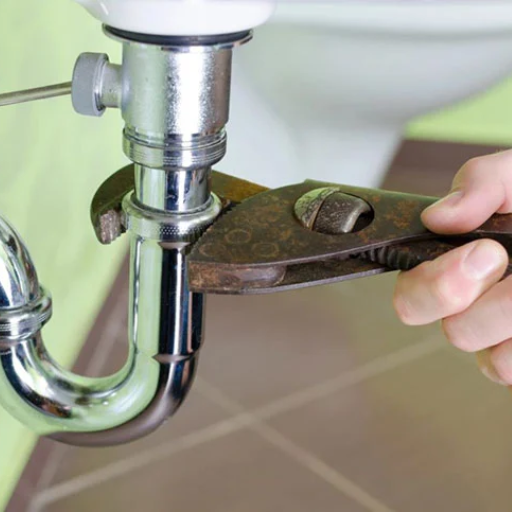
Installation Process for Sanitary Fittings
- Inspect the Components: Check that the components are in good condition and that there are no signs of damage, the system is clean, and pthe arts will work with the system.
- Prepare the Connection: Clean the area that requires a fitting positioned on the surface so no contaminants may intervene.
- Position the Fitting: The fitting is to be positioned so that it rotates about the axis, so a seal is made.
- Secure the Joint: The fitting is also to be held by bolts, gaskets, pipe, or other parts, according to what is determined by the instructions. All bolts or pipe screws must be gentle to prevent leakage.
- Test for Leaks: Any leakage can be determined by testing the flow or pressure of water through the pipes.
Proper techniques for connecting sanitary fittings in piping systems
Selecting proper materials is instrumental in maintaining the strength and sanitization of sanitary fittings within a piping system. One of the most commonly used materials is stainless steel, as it is strong, corrosion-resistant, and sanitary. For instance, Grade 316 stainless steel is perfect for fittings in harsh corrosive environments or systems exposed to chemicals due to its exceptional resistance to pitting and crevice corrosion.
Employing quality silicone or EPDM gaskets is critical in crafting leak-proof seals, particularly in high-pressure or system temperature devices. Some studies allege that silicone gaskets can endure temperatures as high as 450°F, for some food processing or pharmaceutical applications, which is why they are preferred gaskets. In addition, precisely crafted clamps also guarantee that the fitting surfaces will not only be uniform but also secured during grip, ensuring no leakage or system failure over prolonged durations.
Use of certified materials that conform to industry requirements, such as 3 A Sanitary Standards or ASME BPE (Bioprocessing Equipment) standards, will also optimize the performance of the system. Without certifying components, system safety and hygienic credibility will be compromised, which serves as the primary assurance of operators in the food, beverage, and healthcare sectors.
Common installation mistakes and how to avoid them
One issue I have noticed frequently is not measuring or aligning the fittings properly. This can lead to either leaks, improper function, or both. I rectify this issue personally faced by personally double-checking my measurements and using proper alignment tools prior to installation. Another issue is the over-tightening of connections, which can be damaging to the fittings. I stop this from occurring by following the manufacturer’s guidance on torque specifications. Failing to clean the area properly prior to installation can contaminate the seal. I ensure that all surfaces are clean and dry before proceeding to avoid this issue. Following these procedures allows me to ensure preservation of the systems I install.
How to maintain and inspect sanitary fittings in food and beverage applications?
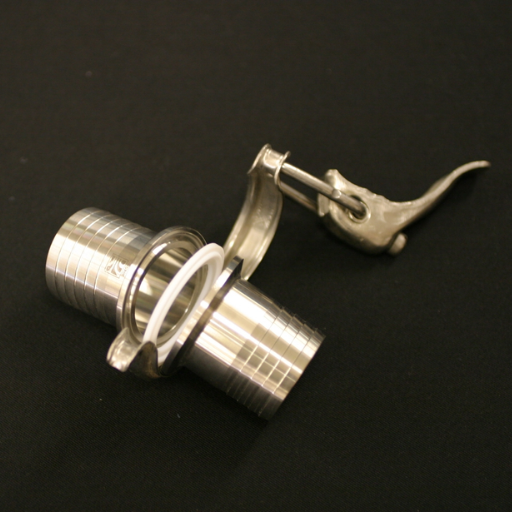
To maintain hygiene and performance standards while utilizing food and beverage services, sanitary fittings require frequent inspection, upkeep, and maintenance. This is one of the practices one should use for proper upkeep:
- Regular Cleaning
To avoid biofilms, bacteria, and food residue accumulation, sanitary fittings should undergo complete cleaning. There are cleaning methods, such as Clean-In-Place (CIP) systems, that do not require disassembly of fittings to clean them, but Manual Cleaning is more suited for intricate areas. Cleanings have to be done in intervals with production schedules in order to uphold sanitation standards.
- Visual Inspections
Check fittings systematically for excessive signs of wear and corrosion, and leaks in joints. In comparison with other materials, stainless steel components, which are normally applied here , tend to have more severe issues like surface pitting and discoloration due to other harsh conditions over a decent duration of time.
- Gasket and Seal Replacement
Parts of gaskets in clean applications tend to fail and leak over time due to high temperatures and harsh cleaning solvents. These components have to be inspected on a regular basis. Damaged parts have to be swapped without any delay so that other components do not get contaminated.
- Pressure Testing
As part of your regular maintenance, perform pressure tests to verify that fittings can maintain a proper seal. Variations in pressure can suggest problems like cracked seals or misaligned connections.
- Use of Compatible Cleaning Agents
Food-grade sanitary fittings require cleaning agents specifically formulated for them. Do not use caustic chemicals that may gradually erode materials and result in reduced quality and compromised safety. For example, stainless steel is well suited for alkaline cleaners.
- Documentation and Record-Keeping
Construct logs detailing inspection and cleaning schedules, as well as component replacements. Doing so will not only ensure accountability but also help meet industry compliance requirements and audits.
Data Insights and Standards in Maintenance
Research shows that poor upkeep of a facility poses a serious threat to contamination in food manufacturing processes and can result in a recall that exceeds 15% of annual revenue. Also, systems compliant with 3-A Sanitary Standards, supported and ISO ISO-certified documents, have been proven to greatly reduce operational risk while providing safe and efficient processing of all tasks.
Following these processes greatly helps in reducing downtime, cross-contamination, product recall, and meeting the strict standards set by the regulators.
Inspection procedures for sanitary fittings and tubing
Maintaining hygiene, along with the proper working order of a tube, requires thorough inspection in systems with sanitary fit parts. Regular checks should pay attention to cracks, corrosion, and other forms of wear and tear that pose a risk to cleanliness or safety.
- Visual Inspection: The sanitary fit parts must undergo regular inspections for signs of abrasions, dents, and scrapes. Studies indicate that visual inspection can detect early up to 40% of the potential problems early, which lowers the chances of system failure.
- Cleanliness Assessment: Residue on the fittings, which could pose a risk of contamination, must be checked. The fittings can also be provided with the needed level of cleanliness by making use of proper cleaning agents and following cleaning-in-place (CIP) procedures.
- Leak Testing: Using pressure and vacuum tests can pinpoint leaks in tubing and fittings. As industry sources suggest, nearly 15% of contamination incidents arise from undetected leaks.
- Material Integrity Testing: Internal flaws, such as cracks, can be identified using methods like ultrasonic and dye penetrant testing without any harm being done to the parts. The risk of contamination, along with equipment failure, can be mitigated by ensuring material integrity.
- Certification and Documentation Review: The right procedures that the inspector should check for are meeting the 3-A Sanitary Standards, ASME BPE, or other local equivalent requirements. Proper documentation guarantees movement and compliance with the regulatory needs.
- Frequency of Inspections: For systems with high usage, quarterly inspections are recommended, whilst moderate use systems should be inspected at least once a year. Sanitary fitting inspections carried out regularly have been shown to increase lifespan by 25% without loss of compliance.
Having a strategic plan for conducting inspections using precise instruments and modern technologies will significantly improve the safeguarding and optimization of sanitary systems. This reduces the chances of expensive problems arising while maintaining the quality of products produced.
Maintaining hygienic conditions in sanitary process piping and fittings
Maintaining the sanitary conditions of process piping and fittings requires achieving optimal product safety as well as operational efficiency. In order to achieve this, proper cleaning procedures together with advanced cleaning techniques such as Clean-in-Place (CIP) are required. Unlike other methods, CIP systems do not require the piping system to be disassembled, which offers efficiency in time and costs. Removal of residues, biofilms, and microorganisms from internal surfaces of pipes, also called ‘self-cleaning’, is superbly managed by CIP systems. Studies suggest that efficiently maintained CIP systems can reduce the cleaning window by as much as 30%, coupled with reduced water and chemical consumption.
Periodic maintenance is extremely beneficial. Gaskets, seals, and fittings have to be checked for wear and tear to mitigate contamination poses arising from leaks or weakening materials. Non-destructive modern inspection techniques, including borescopes and ultrasonic testing devices, afford enhanced precision and, therefore, offer more accurate assessments of piping conditions.
The selection of the material considerably affects the result as well. Stainless steel like 316L is preferred in electropolished surfaces due to ease of corrosion resistance, cleaning, and additional polishing that further reduces surface textures and roughness. As microbiological proliferation poses a risk, proper designs of the slope (1-2% gradient) of piping systems assist in avoiding stagnant zones.
As mentioned earlier, adopting emerging technologies along with these best practices can improve hygiene standards of sanitary process piping and fittings to meet industry requirements while also maintaining constant high-quality production of goods.
Troubleshooting common issues with sanitary connections
Ensuring proper maintenance and troubleshooting of sanitary connections is crucial for prolonging the lifespan and increasing the efficiency of the piping systems in the food, pharmaceutical, and beverage industries. Below are some common problems associated with sanitary connections, along with their fixes:
- Leakage at Joints
Perhaps the most common issue faced is leakage from the joints. Leakage can stem from improper seating of gaskets, warped fittings, or inadequate clamp torque. Inspects gaskets for wear and damage, ensuring the material is suitable based on the environment as EPDM or silicone. Replacing redundant components and properly torquing clamps resolve this problem effectively.
- Buildup of Residues
Poor design combined with inadequate cleaning can lead to the accumulation of food particles and biofilms inside pipes and connections. This residue accumulation can result in greater chances of contamination, which leads to decreased flow efficiency. The integration of Clean-in-Place (CIP) systems with validated cleaning cycles, along with the use of smooth, electropolished interior finished fittings, reduces incursions considerably.
- Misalignment of Connections
Due to incorrect alignment, stress on system fittings occurs, which will lead to failure. During installation, ensure every connection is checked for proper alignment with precision tools, and checked periodically for alignment as part of routine inspections. Minor misalignments can also be adjusted with flexible couplings.
- Corrosion and Material Degradation
Harsh chemicals, cleaning agents, or even unsuitable materials can lead to corrosion. Use more suitable piping materials such as 316L stainless steel, which resist corrosion significantly. Carry out inspections at regular intervals to check material integrity, ensure appropriate cleansing solutions, and make sure the piping material is compatible with the cleaning solutions used.
- Pressure Drops and Poor Flow Rates
Oversized pipes will cause excessive pressure drops, while blockages within the system will reduce flow rates. Ensure that flow rate calculations are performed relative to product type and viscosity, as well as regular cleaning to prevent clogs. Design changes may also be needed in systems with chronic flow difficulties.
If industries comprehend these frequent issues as well as apply proactive maintenance techniques, they can reduce downtime while ensuring the sanitary conditions fundamental to quality production are preserved.
Reference Sources
- The Hygienic/Sanitary Design of Food and Beverage Processing Equipment (2020)1:
- Key Findings: This study outlines the criteria for sanitary design in food equipment, emphasizing the importance of materials like stainless steel for their corrosion resistance and durability. It also discusses international standards and guidelines for hygienic design, including 3-A Sanitary Standards and European Hygienic Engineering Design Group (EHEDG) guidelines.
- Methodology: The chapter synthesizes regulatory requirements, industry standards, and best practices for the design, fabrication, and maintenance of food processing equipment.
- Sanitary Design and Construction of Food Equipment (2020)2:
- Key Findings: This document highlights the importance of smooth, non-porous, and corrosion-resistant surfaces in food equipment. It provides detailed guidelines on materials, surface finishes, and construction techniques to ensure compliance with sanitary standards.
- Methodology: The study reviews existing standards and provides practical recommendations for the design and maintenance of food equipment to prevent contamination.
- Personal Hygiene and Good Maintenance Practices for Food Processing Equipment (2017)3:
- Key Findings: The research focuses on the role of preventive and predictive maintenance in minimizing contamination risks. It identifies common failure points in equipment and provides strategies for implementing effective hygiene practices during maintenance.
- Methodology: The study combines a review of maintenance practices with case studies to illustrate the impact of equipment design and maintenance on food safety.
Frequently Asked Questions (FAQs)
Q: What are sanitary fittings, and why are they important in hygienic applications?
A: Sanitary fittings are specialized components used to connect pipes and tubing in applications where cleanliness and hygiene are critical. They are designed to prevent contamination, minimize areas where bacteria can hide, and facilitate thorough cleaning. These fittings are polished to a high surface finish (typically 20-25 Ra or better) and made from corrosion-resistant materials like 304 and 316L stainless steel. They’re essential in industries such as food and beverage processing, pharmaceuticals, biotechnology, and cosmetics, where product purity is paramount.
Q: What types of sanitary tubing and fittings are commonly used in hygienic applications?
A: A variety of sanitary fittings are available for hygienic piping systems. The most common types include clamp fittings (tri-clamp), bevel seat fittings, flanged fittings, threaded fittings, and welded end fittings. Each serves a specific purpose in hygienic systems. Sanitary tubing is typically thin-walled and precisely sized based on outside diameter rather than nominal pipe size, ensuring consistent connections and minimizing dead spaces where contaminants could accumulate.
Q: Which stainless steel alloys are most commonly used for sanitary fittings?
A: The most commonly used material for sanitary fittings is stainless steel, particularly 304 and 316L stainless steel alloys. Type 304 (18-8) stainless steel offers good corrosion resistance and is suitable for many applications. Type 316L contains molybdenum, providing enhanced corrosion resistance, especially against chlorides, making it the preferred choice for more aggressive environments like dairy processing, pharmaceuticals, and applications involving salt solutions or coastal environments. Both alloys offer excellent cleanability, durability, and resistance to most sanitizing chemicals.
Q: How are clamp fittings used in sanitary applications?
A: Clamp fittings (also known as tri-clamp or sanitary clamps) are among the most popular connections for hygienic piping. They consist of two ferrules with flanged ends, a gasket placed between them, and a clamp that secures the assembly. Clamp fittings are preferred because they’re quick to assemble and disassemble without tools, provide a smooth internal surface with no crevices, create leak-proof connections, and allow for easy cleaning and inspection. They’re used to connect pipes of the same diameter and are available in various sizes standardized by outside diameter.
Q: Why are sanitary fittings polished, and what are the standard finish requirements?
A: Sanitary tube fittings are polished to create ultra-smooth surfaces that prevent product adhesion and bacterial growth. The polish reduces microscopic pits and crevices where contaminants could collect and makes cleaning more effective. Standard industry finishes include: – 32 Ra (rough): Minimum for non-product contact surfaces – 25 Ra: Common for general dairy and food processing – 20 Ra: Standard for product contact surfaces in food and beverage – 15 Ra: Often required for pharmaceutical applications – 10 Ra or better: Used in critical pharmaceutical and biotechnology applications The smoother the finish (lower Ra number), the more hygienic but also more expensive the fitting becomes.
Q: What’s the difference between industrial pipe fittings and sanitary pipe fittings?
A: While industrial and sanitary fittings may sometimes appear similar, they differ significantly. Industrial fittings focus primarily on structural integrity and leak prevention, while sanitary fittings prioritize hygienic design. Key differences include: surface finish (sanitary fittings are polished to higher standards), internal design (sanitary fittings eliminate dead spaces and have smooth transitions), material certification (sanitary fittings have material traceability), connection types (sanitary systems use specialized connections like tri-clamps rather than threaded joints that can harbor bacteria), and quality standards (sanitary fittings comply with additional regulations from organizations like 3-A, FDA, and ASME BPE).
Q: How are tubing and fittings sized in sanitary applications?
A: Unlike industrial piping that uses nominal pipe sizes (NPS), sanitary tubing and fittings are sized by their actual outside diameter in inches or millimeters. Common sizes include 1/2″ (12.7mm), 3/4″ (19.05mm), 1″ (25.4mm), 1.5″ (38.1mm), 2″ (50.8mm), and larger. This precise sizing ensures proper fit and alignment, critical for maintaining hygienic conditions. Wall thickness is also specified, with standard options including 16GA (1.65mm) and 14GA (2.11mm) for most applications. When ordering components, it’s essential to specify both the outside diameter and wall thickness to ensure compatibility.
Q: Where are sanitary fittings used in industry?
A: Sanitary fittings are used across numerous industries where product purity is critical. Primary applications include: – Food and beverage processing (dairy, brewing, wine, sauce manufacturing) – Pharmaceutical manufacturing (WFI systems, process piping) – Biotechnology (fermentation, cell culture) – Cosmetics production – Chemical processing of sensitive products – Medical device manufacturing – Laboratory systems These industries use sanitary fittings to transport products, ingredients, and cleaning solutions while maintaining strict hygienic standards and regulatory compliance.
Q: What regulations and standards govern sanitary fittings used in hygienic applications?
A: Sanitary fittings must comply with various standards depending on their application: – 3-A Sanitary Standards (dairy and food) – FDA (Food and Drug Administration) guidelines – ASME BPE (Bioprocessing Equipment) standards – EHEDG (European Hygienic Engineering & Design Group) criteria – USP (United States Pharmacopeia) for pharmaceutical applications – ISO 22000 (food safety management) – GMP (Good Manufacturing Practices) These standards ensure that fittings meet specific design, material, finish, and documentation requirements necessary for hygienic processing.
Q: How should sanitary fittings be maintained and cleaned?
A: Proper maintenance of sanitary fittings includes regular inspection for wear, damage, or contamination; correct gasket selection and replacement; proper installation to prevent dead spaces; and appropriate cleaning procedures. Clean-in-place (CIP) systems often automate cleaning using carefully programmed cycles of water, caustic solutions, acids, and sanitizers at controlled temperatures, flow rates, and durations. Manual cleaning requires disassembly, scrubbing with approved cleaning agents, thorough rinsing, and sanitizing. All cleaning chemicals must be compatible with the stainless steel alloys used in the fittings to prevent corrosion or damage to the polished surfaces.






